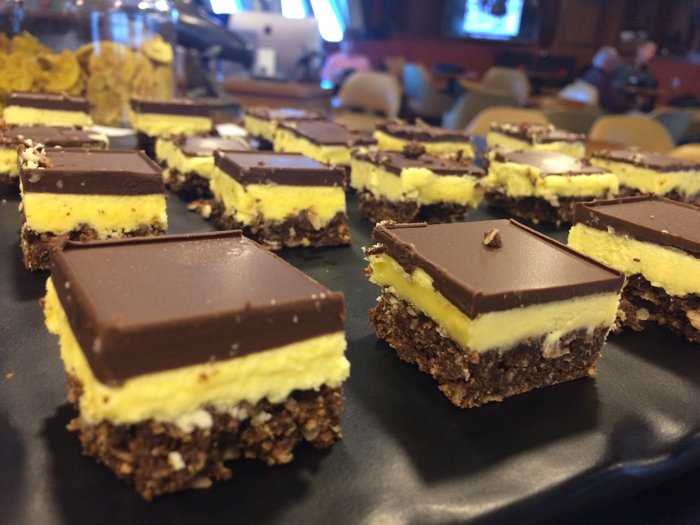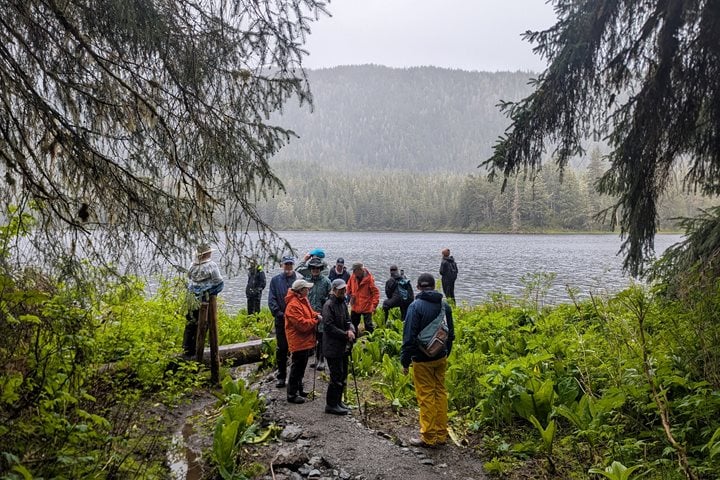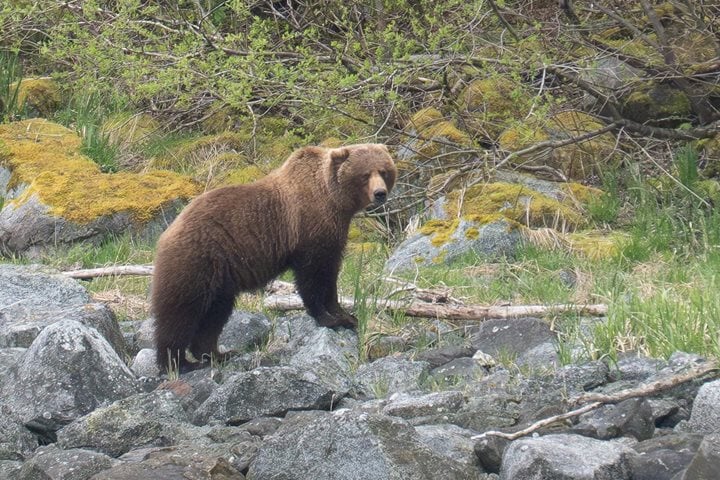The Salish Sea encompasses the land from Olympia, Washington west to the Strait of Juan de Fuca and north into British Columbia up into Johnston Strait. It also includes the surrounding hills and mountains, as they are a critical part of the ecosystem known as the watershed areas.
The sun was rising over the city of Vancouver, British Columbia as we cruised north through the Strait of Georgia. We left Seattle last night for our 12-day journey north, which will culminate in Sitka, Alaska.
With clear skies and calm waters, we arrived in Nanaimo Bay to officially enter Canada, where we stayed for a couple of hours going through customs. As we left Nanaimo, the galley outdid themselves with a platter of Nanaimo bars that they brought out to the lounge. Nanaimo bars were actually first created here, and are a northwestern delicacy not to be missed!
A mature bald eagle flew over the bow of the boat and went soaring off to the east. It then turned around with a flock of angry gulls in pursuit. It had a stolen fish in its talons and was not going to give it up, despite the gulls’ dive bombs and assaults. We lingered and drifted along the eastern shore of Chrome Lighthouse where several more bald eagles made themselves known. Chrome Island is off Boyle Point on Denman Island. Boyle Point is a provincial park. We spent 45 minutes here receiving photography tips from our expert team.
About 15 miles off Nanaimo, we had a killer whale encounter. We came across a group of five “Biggs’s” killer whales. These killer whales are part of the community of orcas that eat marine mammals. There are two distinct communities of orcas that share this territory we call the Salish Sea. One community eats fish: 90 percent of their diet is king salmon; the other 10 percent is other species of salmon and bottom fish. (We have five species of salmon in the Salish Sea). King salmon is the fish-eating orcas favorite because it is the largest and has the highest fat content. When using calories for hunting prey, it is best to be economical.
However, these killer whales were in pursuit of the harbor seals that were hauled-out on the isolated rocky islets. When they are hauled-out like this sunning themselves, we call them “rock sausages.” They blend in well with the rocky landscape. Harbor seals have to haul-out of the water every few hours or they become hypothermic, as they do not have a very thick blubber layer. What a great day for wildlife, and only our first day out!






